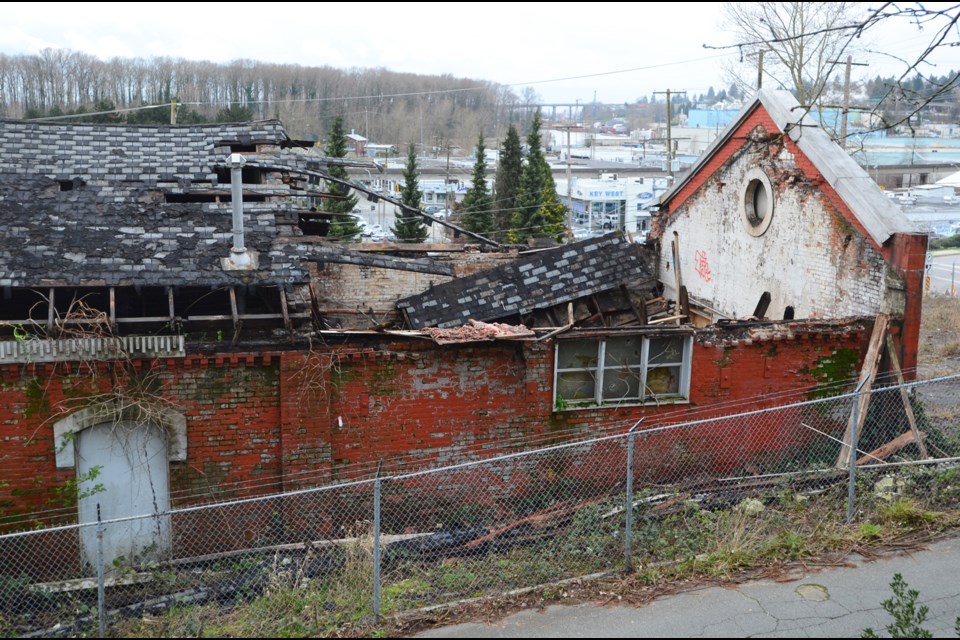The collapse of part of the roof of the 1886 Gas Works building on 12th Street is highlighting the need to hammer out a plan for the first gas plant building in B.C.
The building at 231 12th St. is the oldest remaining brick building in New West, surviving the Great Fire of 1898. On Sunday afternoon, a portion of the building’s roof collapsed.
“I’m hoping it will be a wake-up call,” said Coun. Jaimie McEvoy, who included the Gas Works on a list of the city’s top endangered heritage buildings in 2007.
McEvoy said the collapse of part of the roof isn’t a massive concern because the plan wasn’t to keep the roof.
“The building has solid historical and architectural value. There is nothing significant about the roof per se,” he said. “It’s been anticipated for a long time that if the building was renovated for a practical use that there would be a new use.”
Julie Schueck, the city’s heritage planner, said Sunday’s incident has refocused everyone’s attention on the Gas Works site. She noted that a representative from the province was on site soon after the roof collapsed and took action to ensure the site was safe and secure.
“We are still in discussions with the province. The province is the owner of the property,” she said. “The big discussion point is about the remediation of the land. Based on its past businesses or occupations on that property, there’s been a lot of contamination in the soil, possibly even in the building material itself, but we are not sure. It’s just a matter of coming to an agreement on who is going to take care of what aspect.”
Schueck agreed the roof collapse isn’t a big concern, as long as the structural stability of the building is maintained. A public consultation that took place several years ago included three different scenarios for the site.
“The public loved the idea of the whole site getting a community centre, a fire hall and a great big park above, with the Gas Works building as the highlight, and quite possibly not having a roof, being open to the air, and perhaps having some container gardening in there or picnic area, some sort of community use,” she said. “That got a lot of interest that idea.”
In recent years, Schueck said there have been “consistent but slow-moving” discussions between the province and the city about the fate of the site.
“This has definitely refocused the province and ourselves,” she said.
In 1997, a consultant who prepared a heritage assessment of the building concluded it had tremendous historical significance.
“It’s the city’s oldest remaining industrial building and its oldest brick structure. It’s one of two or three early gas works buildings in the province,” Schueck said. “It’s a rare example of a late Victorian industrial architectural style. It’s very important to us.”



